ESG: Stands for Environmental, Social and Governance. Governance is process of guiding society toward positive outcome and away from harmful ones.
What is Environmental Governance?
- Influncing Colletive behavior towards favourable outcome
- Nudging, Interacting with people to affect collective action.
- Why rational individual action lead to social collective diasasters.
- Regulatory processes, meachanisam and organisation
Governance vs Government
- Governance includes government.
- Governance comprise more people, not just government, including also NGOs, private businesses.
- Government is more hireachical, wheras Governance is not.
Example of Governance Problems:
- Private interests
- non-government interests
- climate changes
- Agricultural Pollution
- For instance, your chemical goes into river, government may want to fine you or put you in jail, however it is hard to quantify how much damage you caused. Governance remedy the traditional government’s inability of enforcement by changing the farmers action collectively.
Four Types of Environmental Problems:
- Colletive actions:
- rational individual action lead to socially not desirable outcome.
- Tradgedy of commons: Over-harvesting the common pool resources, in the long-run, resources are depleted.
- Free-rider problem: not contributing to the public goods.
- Externality:
- spill-over effect on third parties whose cost is covered by the person who created the externality.
- everyone is collectively paying the cost of externality.
- We want to internalised the cost.
- There is also positive externality which is underproduced, such as building flood defence, protecting all people in the downstream of the river; however, only people near the dam pay the cost. Another example is a building a lighthouse.
- Allocation problem
- carbon pollute permits
- Institutional interplay
- Mission overlap
- Things are not aligned quite well
- Mission conflicts
- Division of responsibilities between governance levels, (National vs local)
- Mission overlap
Where does the demand for governance come from?
- from the concept of collective action:
- outcome that is optimal action for you, is the sub-optimal outcome for the collective group. (from Olson, 1965: ‘The logic of collective action’)
- The dilemma of overconsumption associatated the tragedy of the commons and the free-rider problem associated with efforts to supply public goods dominate collective-action perspectives on the demand for governance.
- Schelling emphasis in drawing a clear distinction between ‘micro-motive‘ and ‘micro-behavior‘
- G. Hardin developed the idea of ‘Tragedy of the Common’.
- ‘Social Trap’(Cross and Guyer) , it happens when the members of a group adopt a form of a behavior that seem benefitial at the outset but hardens into a pattern of destructive behavior that is difficult to alter.
- The demand of governance:
- Arises from the existence of interdependencies between human actors.
- Arises from the fact that we now persue a number of distinct goals at the same time.
- The supply of governance:
- Government as Traditional suppliers
- Governance without Government (Hayek’s invisible hand)
- Alternative Governance Mechanism
- intergovernmental agreement
- private governance
- civil society
- hybrid models
A interesting Book: Why Politics Failed? (About Climate Risk)
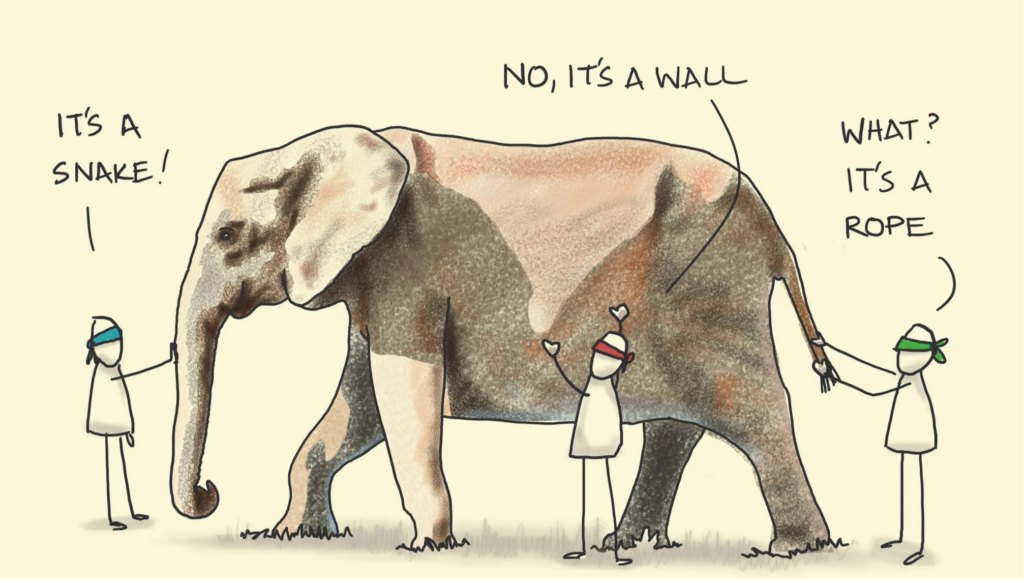
They all perceive the elephant based on their limited experience.
What is an environmental governance process?
- A consensus-based process where actors (try to) come together to address an environmental issue that all are interested in resolving, but none has power to resolve on their own.
- How to analysis environmental governance processes?
- What is that?
- Key components
- The environmental issue
- provision scale
- actions
- collective actions
- power and justice
- Mode of governance
- Examples of GE:
- Amazon Fund: NGOs receives funds from private firms donating to reforestation of Amazon. The health of Amazon forest influence world climates.
- Ultra low emission zone: in london, london municipal policy have impact on other neighouring outside juristiction, rest of city will have more cars
- Partnerships
- Public social partnership
- Private social partnership
- Resource co-mangement
- Six Problematics of governance:
- Re-scaling of governance: changes in how governance operates across local, national, and global level.
- Community chain coordination: Management of environmental impacts throughout production and supply chain.
- Collective action for resource management: Emphasis on community-based and participatory resource management approaches.
- Political partcipation: Inclusion of diverse actors in decision-making beyond traditional government entities.
- State regulation: How states adapts their regulatory frameworks under capitalist systems.
- Rule and production of socio-natural order: understanding how governance produces social and environmental order through various power dynamics.
- Neoliberal Environmental Governance: using market-based mechanism, like emissions trading, are used instead of state-led approaches to manage environmental issues.
- Eco-Governmentality: Drawing from Foucault’s concept of governmentality, environmental knowledge and politics shape behavior and governance structure.
- Power dynamics: There are complex power relations that either facilitate or obsecure conflicts and interests among various stakeholders.
Spatial ‘fit’
Mode of governance Defination: Way of corrdination of actions. Market coordinates through price and competions. The networks coordinates on the Trusts among people. An example of a very hireachical organsiation: military. Market tends also feature regulation.
Environmental governance system based on hirearchy governance: fines, taxes.
Scales: the scope of actor that address the problem.
IPCC: they produce a yearly report each year; about climate change, like the temperature change.
Scales, Actors and Modes of Governance
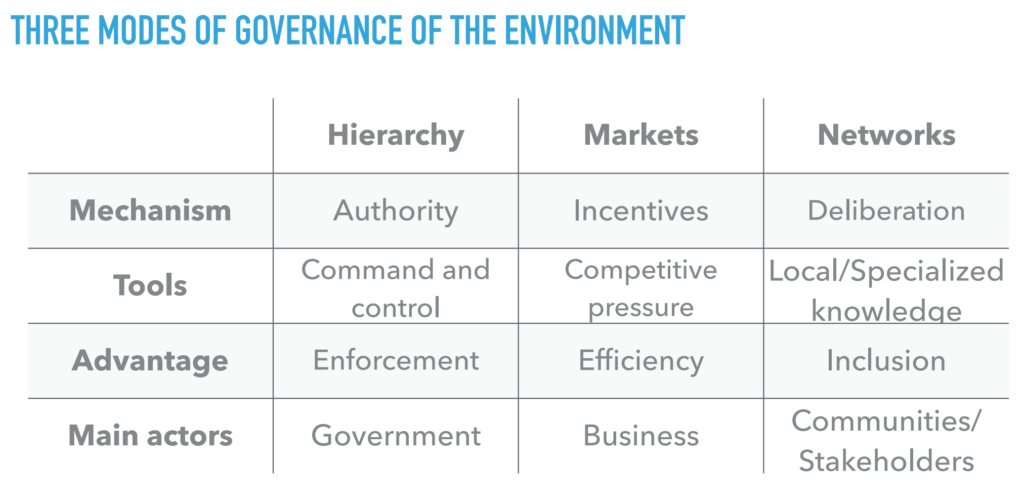
Hierachy
- Top-down government decision
- You know who is responsible for what
- The is a adminstrative structure
Market
- Focus on the micor-level;
- focus on individuals
- Arm’s length: everyone has the same knowledge and not dependent on other people; the market is decentralised
- Capital market
- Appeal to individual rationality and incentives: self-interest, competition
- Coordination by Price
Networks
- Emphasis on relationships ad repeated interactions
- Social relationships
- Create incentive to build relationship with each other
- Coordinated by: Interdependency, communication, information exchange
- Horizontal: Every actor has the same right to be there, however, small countries small representative system can also achieve this horizontal effect.
How do we design governnace to be more equal?
- Difference governance process introduce inequality
- Therefore, create an agreement that all countries to commit and act is one approach.
What mode of governance is suitable?
Depend on what you want to achieve:
- Environmental agency tend not to intervene the market, but it create the rule of market sometimes.
Environmental Governance Scale should be think of in both adminstative and Ecological level. Why?
- Externalities
- Interdepencies
- Policy Inefficiecy resulting from different goal due to hirearchy scale


global bads: climate change, you can measure the sea level, carbon emissions. However, no single countries can address this issue on their own.
The bad: smaller countries has smaller budget to contribute to climate protectional pratices
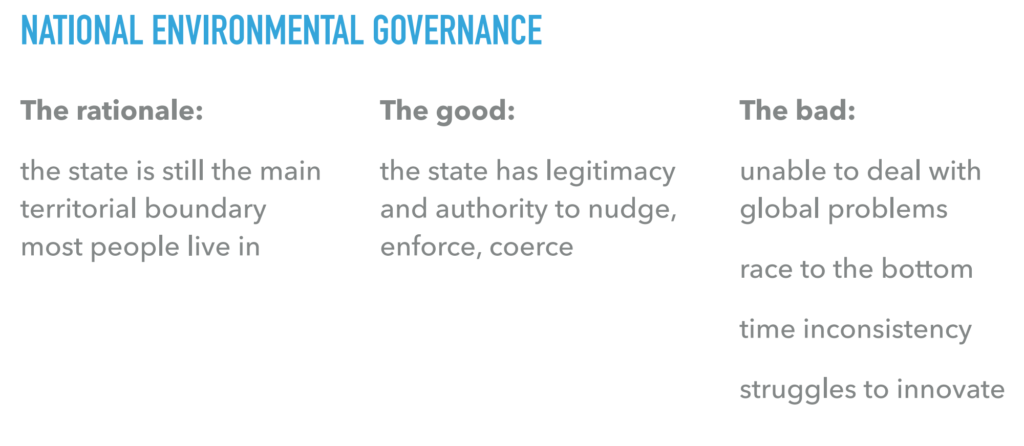
The state can coerce and make laws, you don’t have to wait for consenses of climate conference.
Global bad remain global bad, you can’t address the climate issues of foreign countries. Contribute to climate budget lead to free-riders.
Elections affects climate policy consistencies
Struggle to innovate
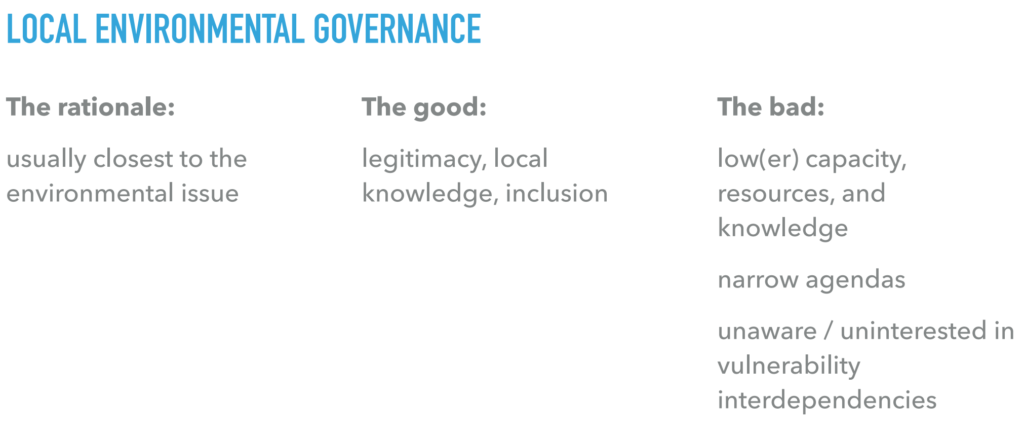
More directly to address the problem, people are more likely to be involved in local community problems. More involvment, more knwoledge.
However, only small problems are addressed due to limited budget and resources.
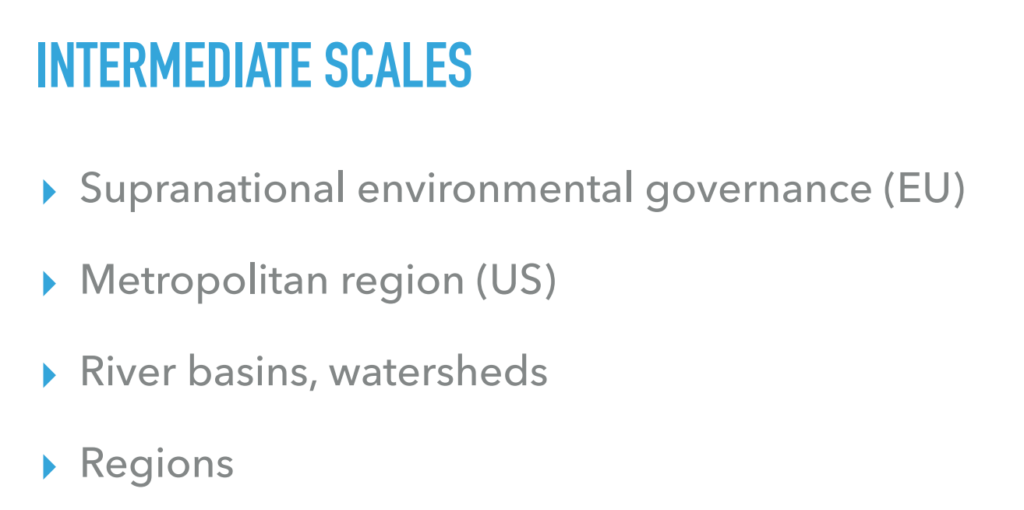

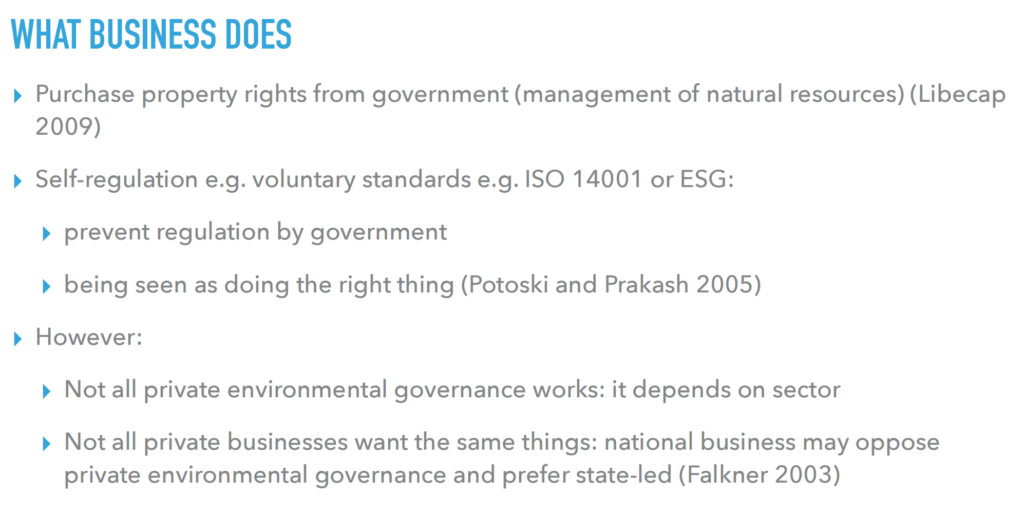
Business can privatise resources for the purpose of conservation. It can buy land for resource conervation.
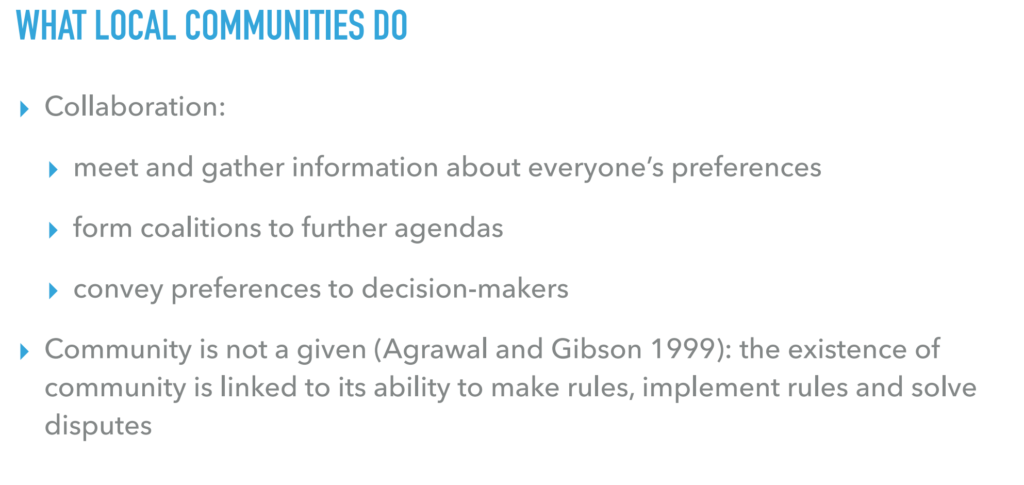
New Scales:
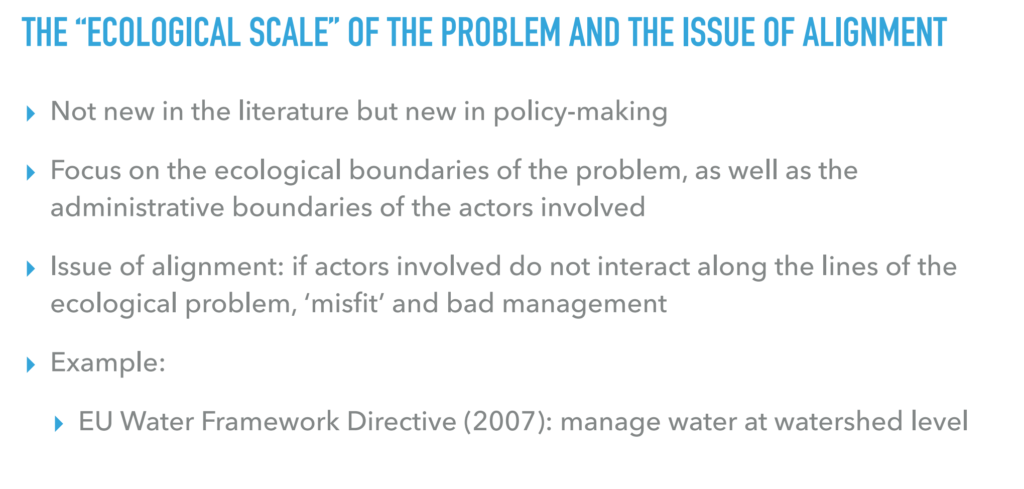
Need to the adminstrative scale to be aline the resource itself, so that the people that can better manage

New Actors
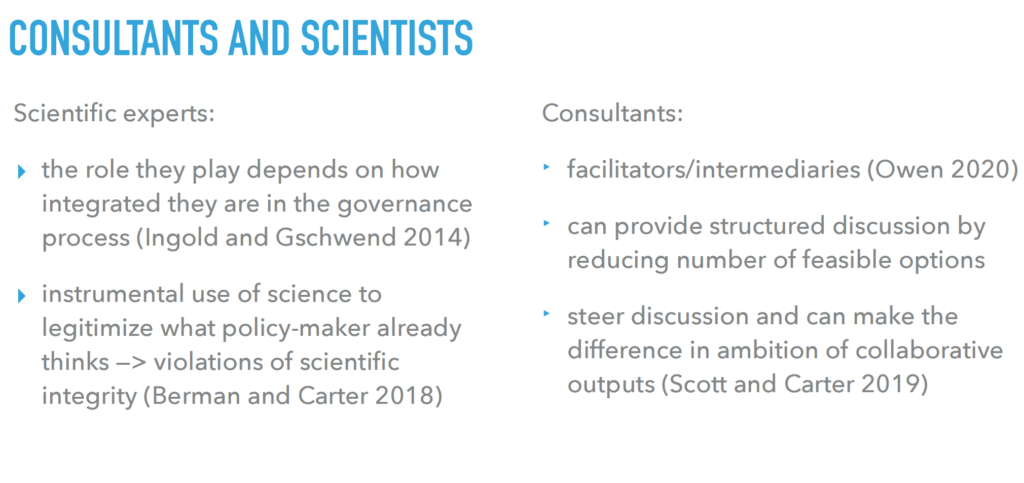
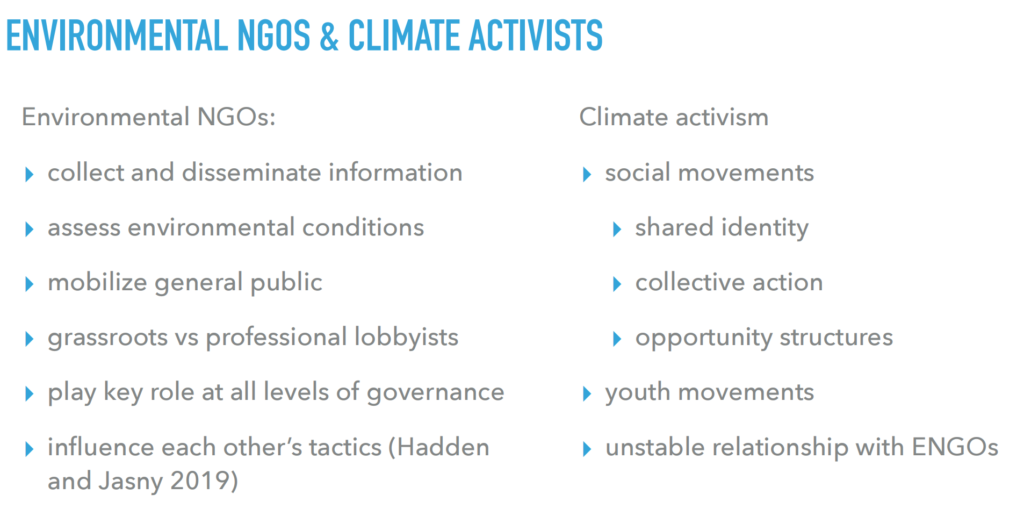

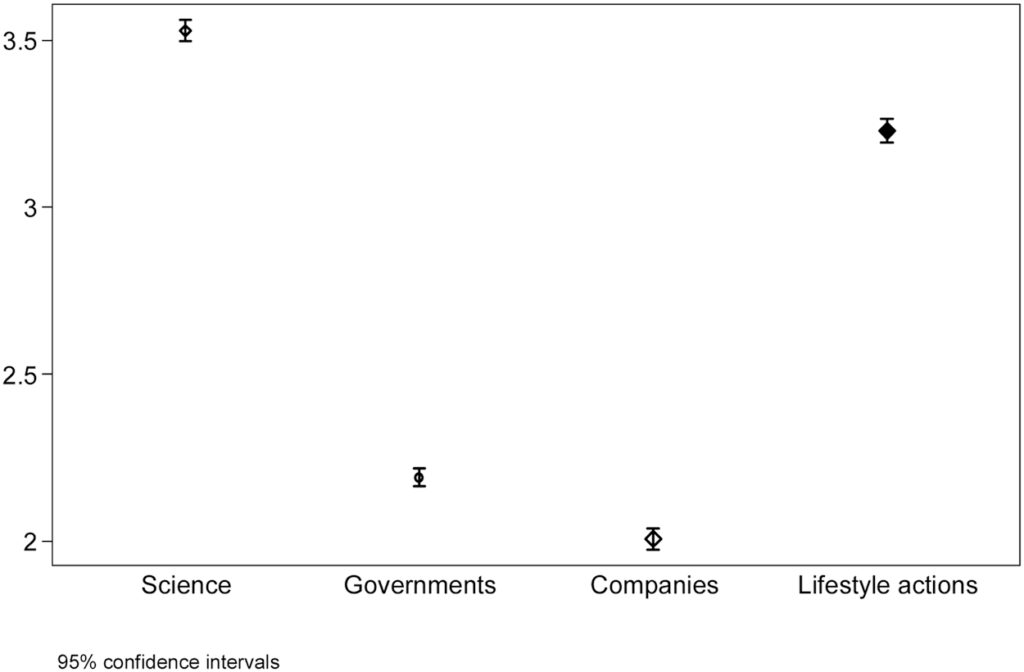
market, and lifestyle actions to solve environmental problems/stop climate
change among 2019 FFF protesters (N=4699 across 15 European
countries).
Younge people trust in science more as well as individual in action.

New Ways of Managing Complex Governance Challenges
Hybrid forms of governance aim to leverage the strengths of different social arenas or mechanisms:
- State Authority: Enables action across jurisdictions with the backing of state power.
- Market Mechanisms: Mobilizes basic human incentives through market exchanges.
- Community Engagement: Utilizes solidaristic relationships and localized, time- and place-specific knowledge inherent in communities.

Collective governance brings public and private stakeholders together in collective forums with public agencies to enage in concensus-oriented decison making.
Difference between coorporation and coordination game:
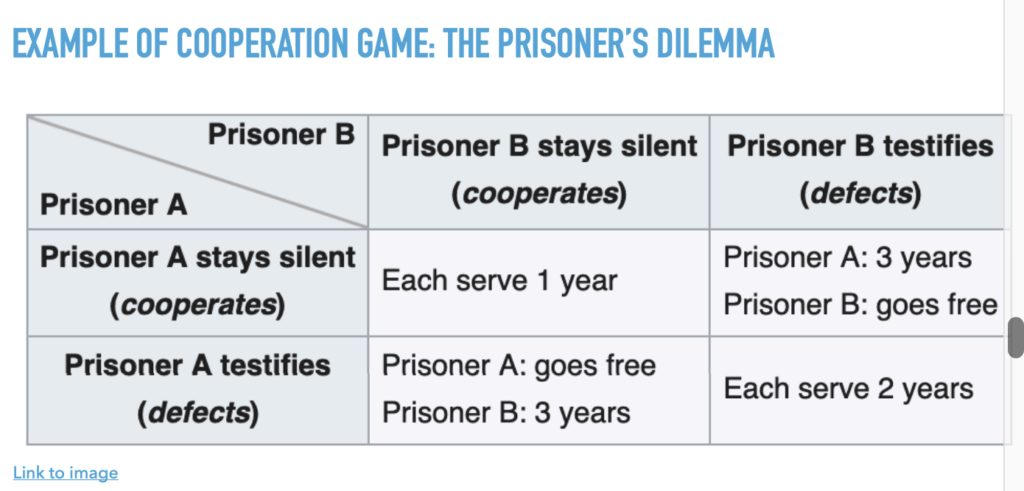
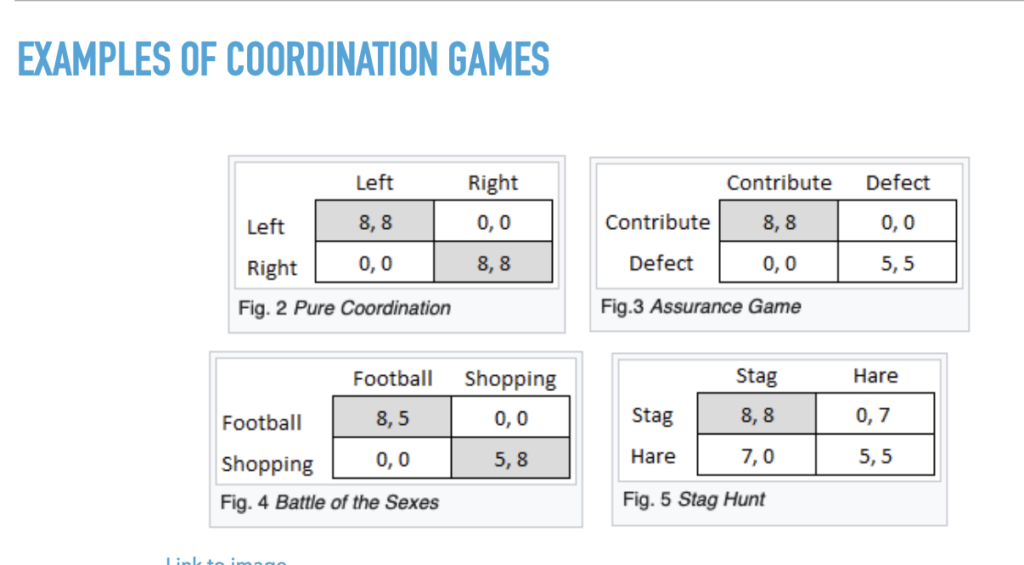
Coordination game: everyone want the same outcome, just holding different opinions on how.

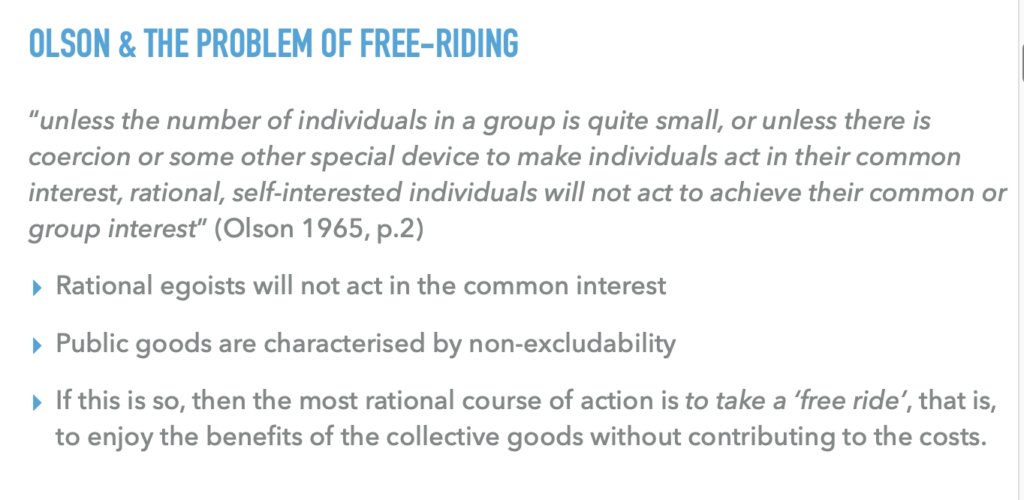
If group size is small, the good will be provide. The cost of provision is lower than the benefit attained. Social ties can work as mechanism of coercion: friendship, professional networks, reputation etc.
But as the group size increase, the cost of monitoring increases and exceed the individual’s benefits; and free-riding dominates. (Olson)
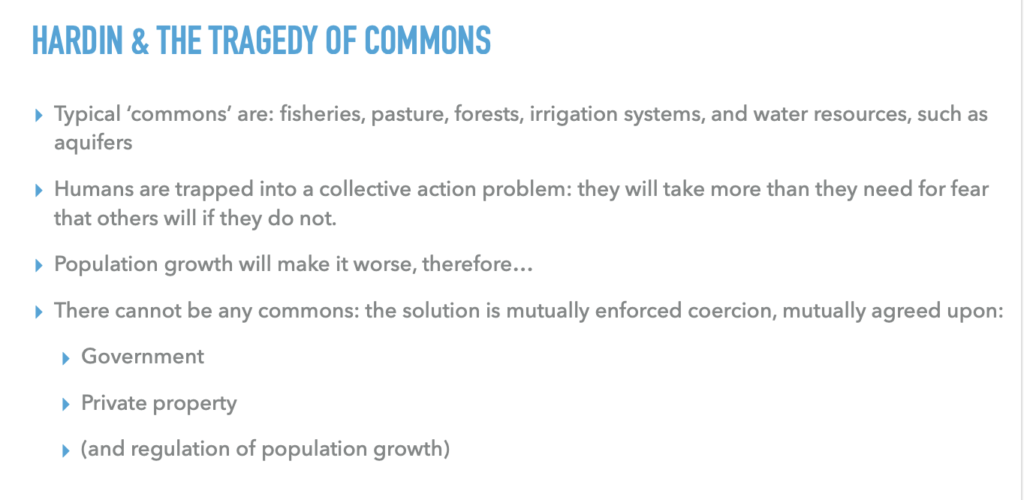
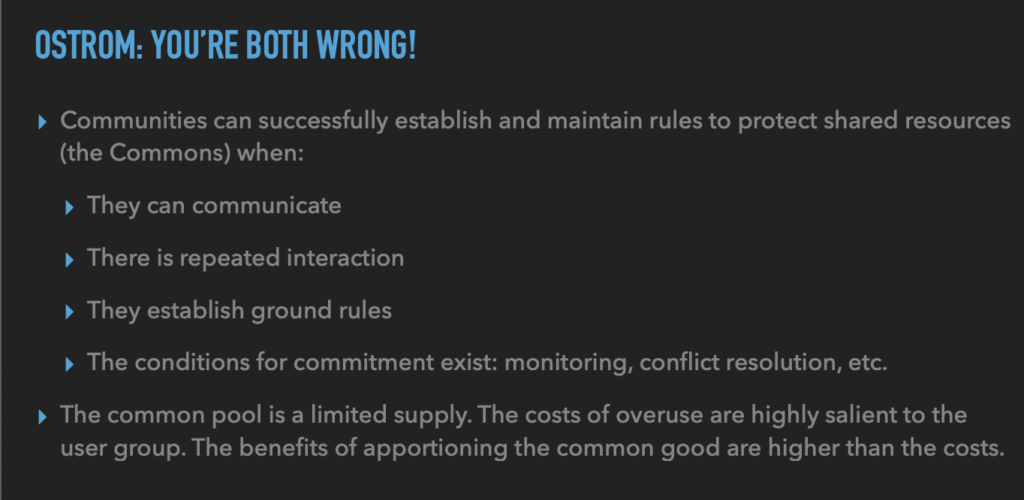


Leave a Reply